I've been primarily a Nikon shooter for all my digital SLR life; I started on film with some compact cameras and a Minolta X-700, but switched to Nikon starting with a D40, working my way up through the years to a D750 today. I love Nikon glass, I love the ergonomics, and I am very used to SLR photography and all it entails.
But after witnessing the steady rise in mirrorless camera popularity, I decided to start testing the waters with a Sony a6000. And one of the major benefits (at least in my usage) is that if you choose an APS-C system like the Sony a6xxx series, you can (in theory) have a more compact camera system that performs as well as larger SLR brethren.
In practice, you get what you pay for in terms of weight. The physics of light dictate that fast, good lenses will be pretty much the same size on whatever mount you use, and there are always some 'sweet spots' for compactness vs. performance on any kind of camera lens mount.
I was hoping the Sony 20mm f/2.8 pancake lens (SEL20F28) would hit that sweet spot for me on the Sony APS-C mirrorless system... but alas, it didn't.
tl;dr: The 20mm f/2.8 is a decent, extremely compact lens for Sony E-mount cameras, but it's performance is lackluster at best, and only marginally improved over the kit lens—but without zoom or stabilization. It's a little expensive for what you get, but it does turn an NEX or a6xxx camera into a pocketable affair, at least if you have large pockets!
The Lens
First, an overview of what you're getting:
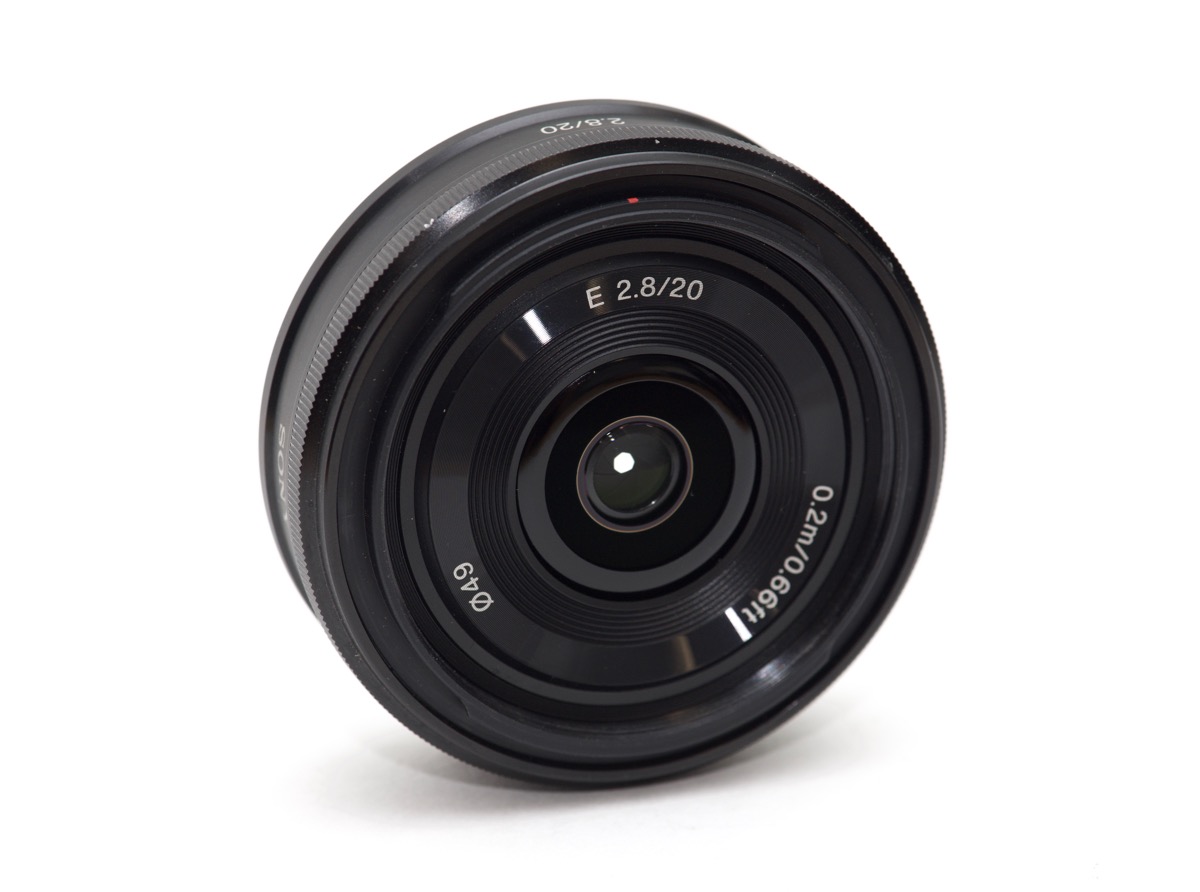
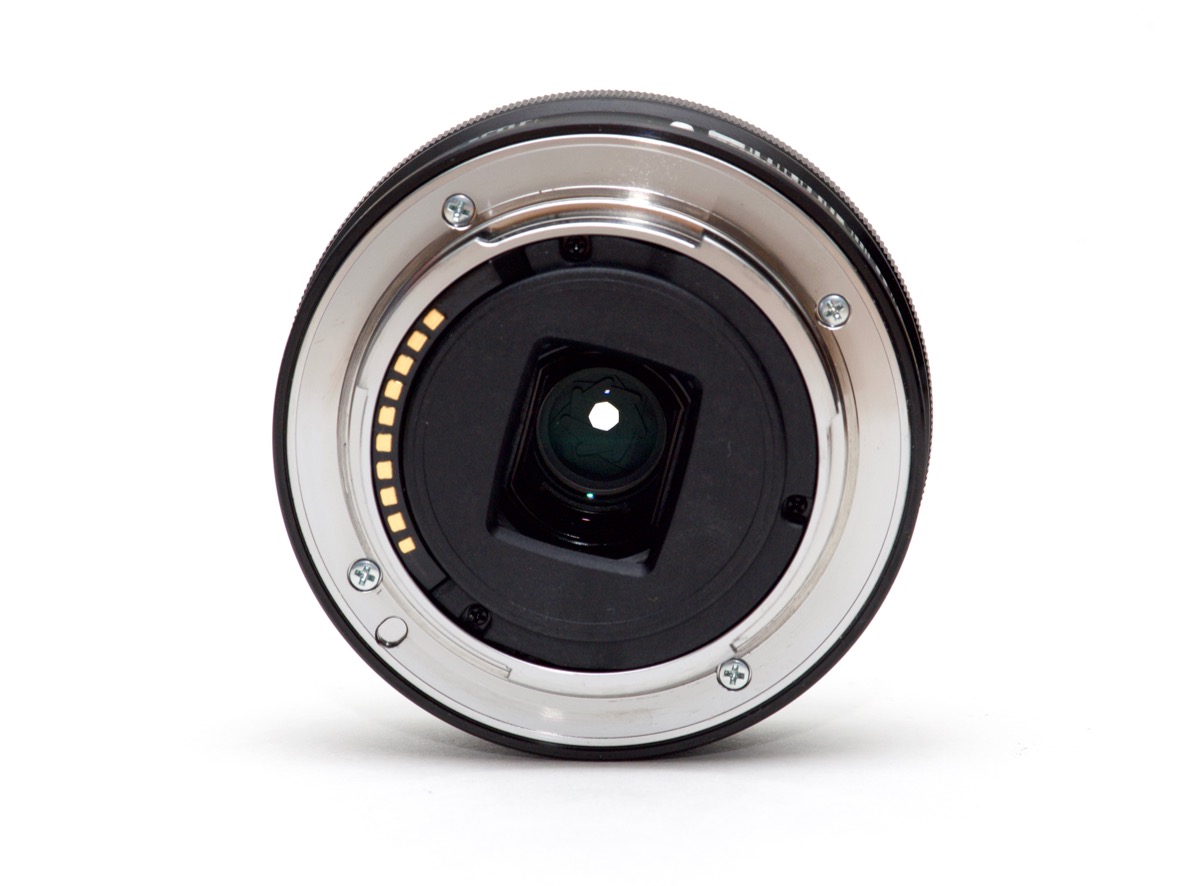
The lens has a thin but usable manual focus control ring. It's fly-by-wire, so the feedback is a little funky compared to lenses where focus is mechanically tied to the focus ring, but it works well enough with focus peaking when needed. The thinness of this lens is great for a compact walkaround camera setup, but it also makes getting it off the camera very slightly annoying, since you have to 'pinch' in around the free-spinning focus ring to get a grip on it. This might only be an issue for those with larger hands, though.
Speaking of thinness, how about a comparison to two other small E-mount lenses I have:
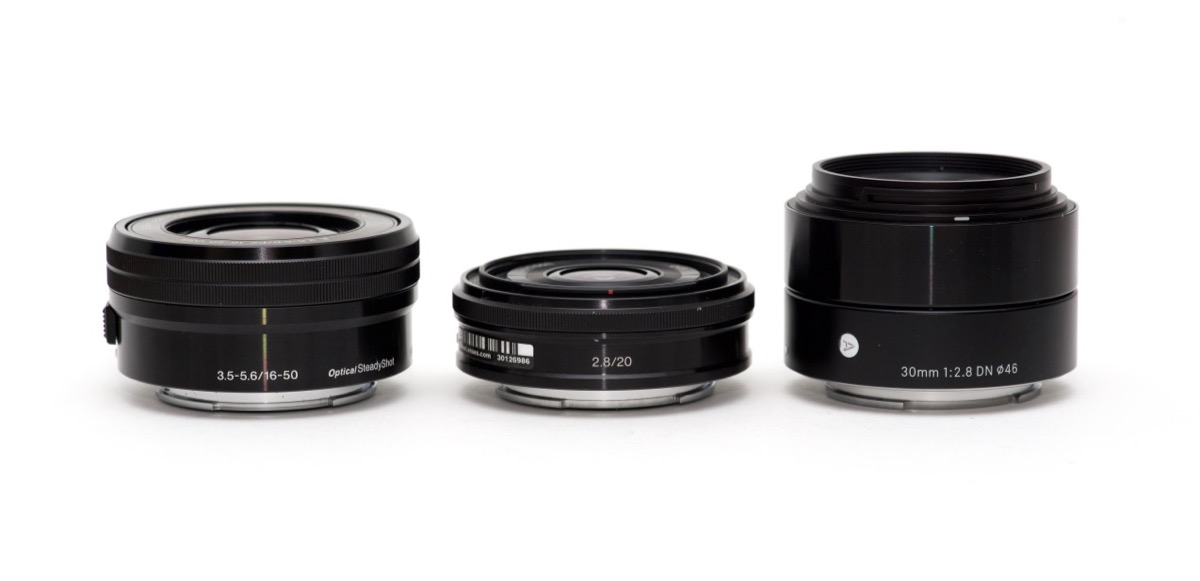
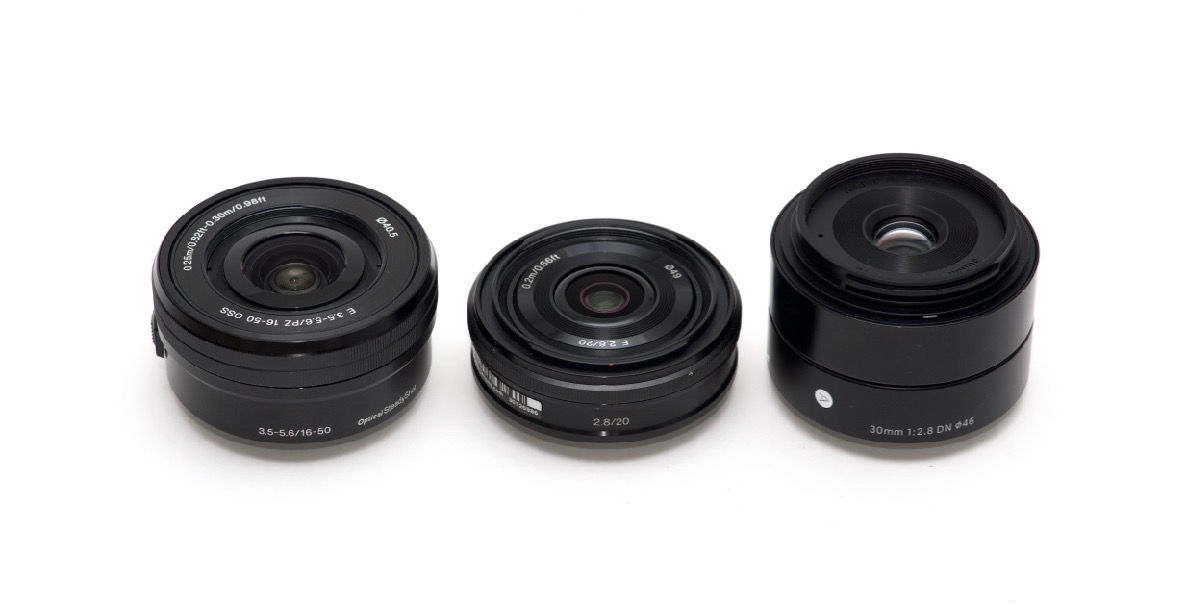
From the left: The kit lens (Sony 16-50mm f/3.5-5.6 OSS), the 20mm f/2.8 being reviewed, and the Sigma 30mm f/2.8 Art.
This lens is seriously compact; it's like Sony took the kit lens and sliced it cleanly in half. That's definitely the best attribute of the lens, and probably the reason you're reading this review. But size isn't everything—otherwise nobody would carry around two pound 35mm f/1.4 prime lenses!
But it does look great on the a6000:
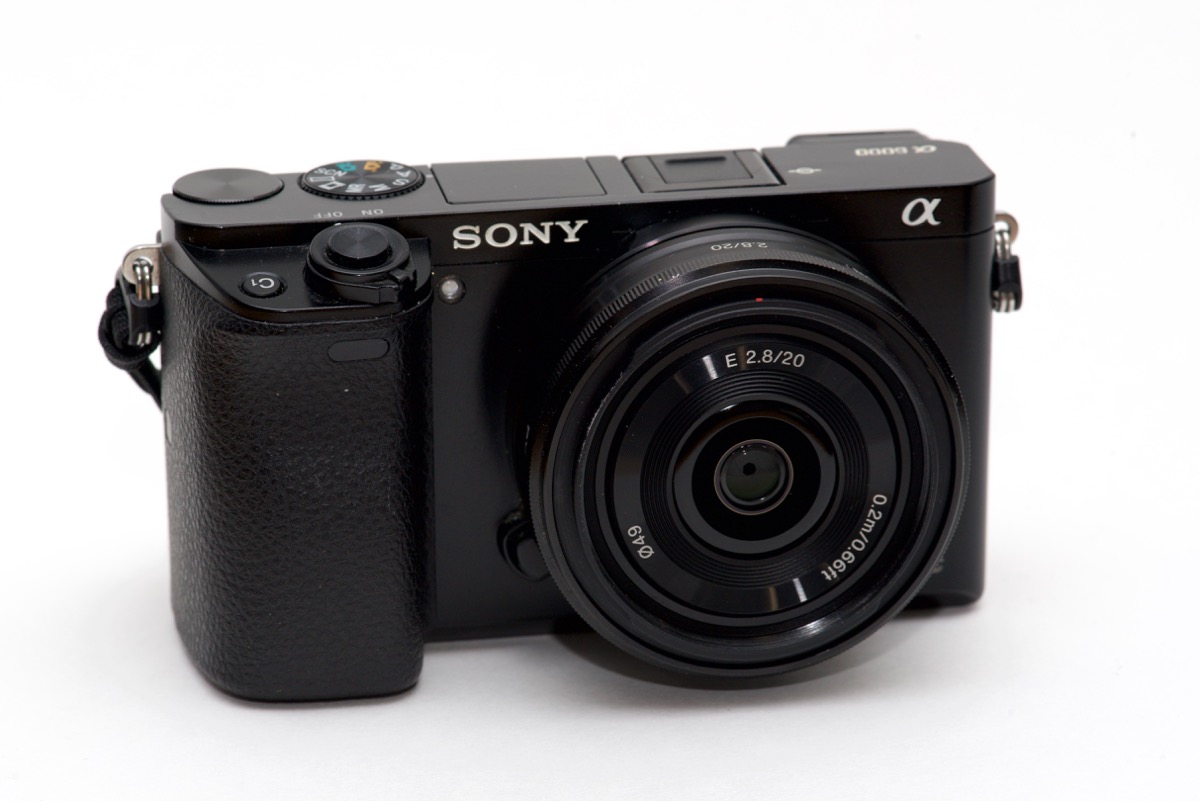
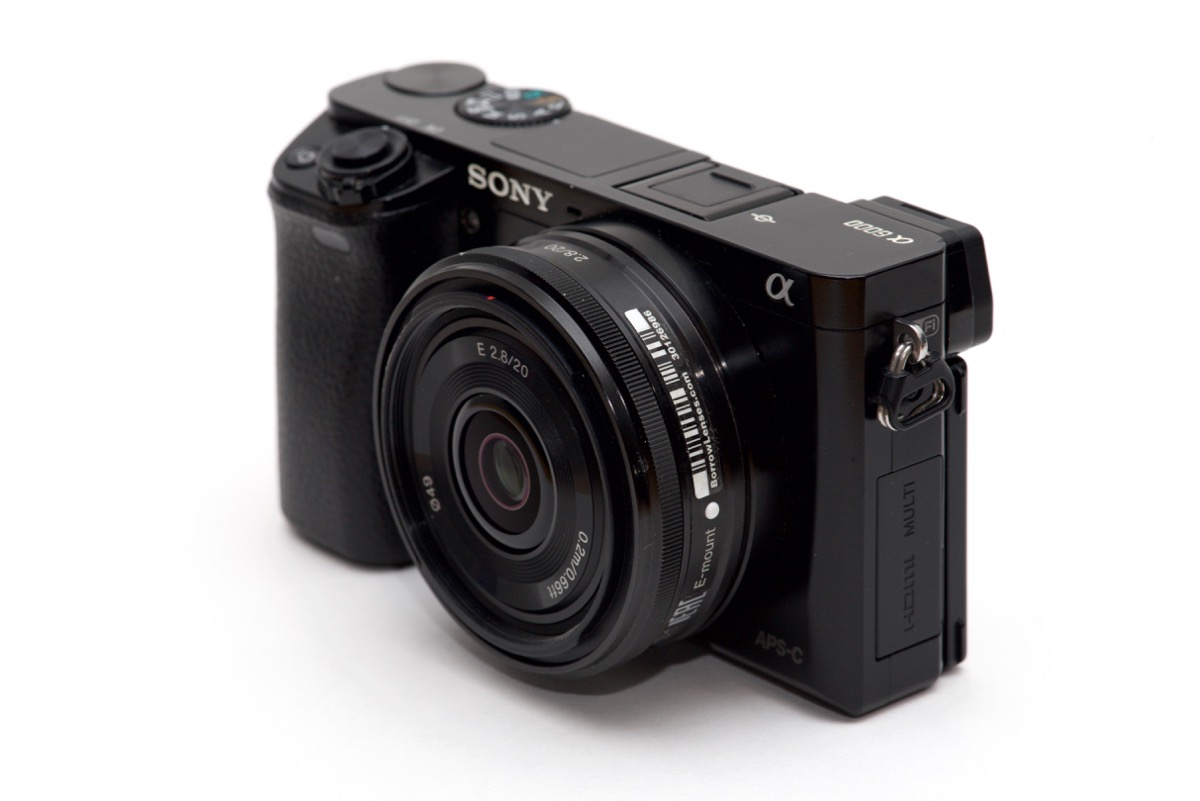
Performance
You may notice the Borrow Lenses sticker on the side of the lens; I was a little leery of outright purchasing the 20mm, since it isn't a lens I could offload for a similar amount on Craigslist quickly, so I rented a copy for Labor Day weekend. I'm glad I rented the lens, because after using it for a few days, I found it's just not the right performance vs. compactness tradeoff for my style of shooting.
I could prattle on with words, but a picture speaks more eloquently:
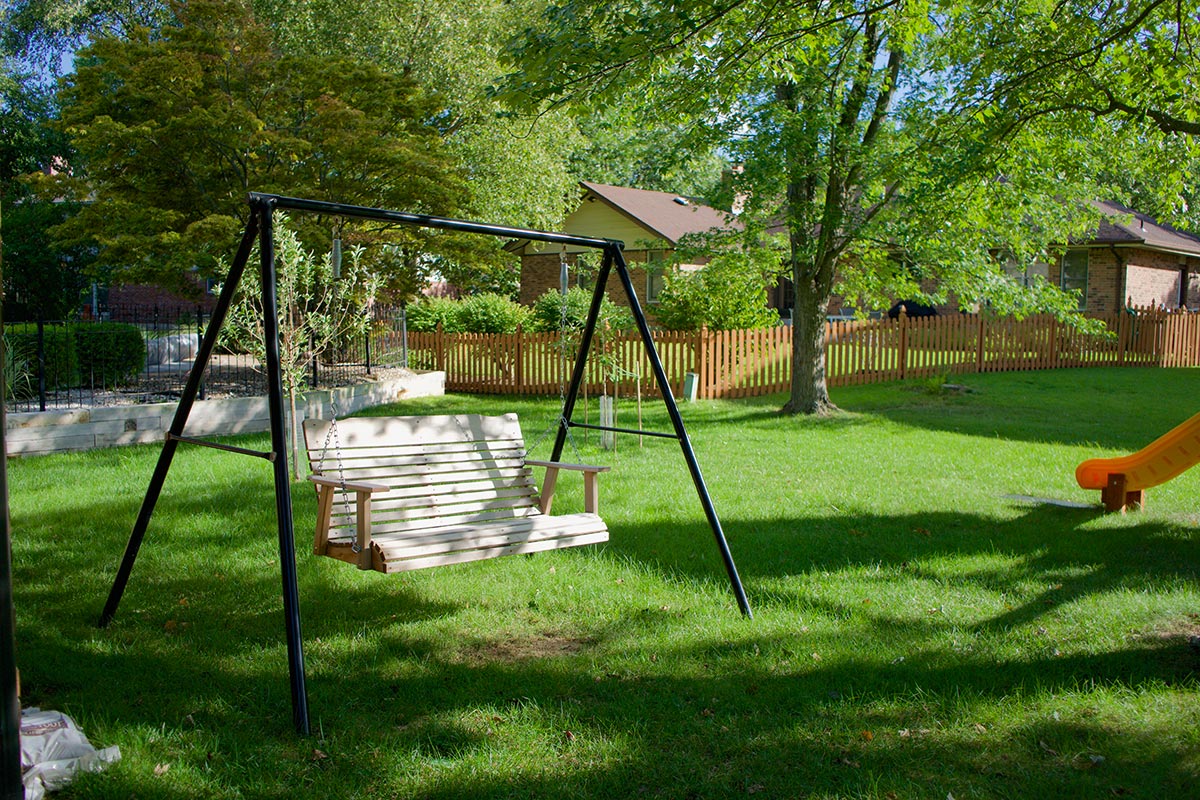
"But wait," you say, "that picture doesn't look so bad!"
You're quite right—at least not when scaled down for web viewing or social media sharing. But I like to have more flexibility with my photos; and if a lens doesn't do much better than my smartphone in common scenarios wide open, I don't see the value (again, for me—it may be different for you!).
Let's zoom in and see where the problem lies—here's a 100% crop at f/2.8 (from the above picture) on the focal point—the chain on the right side of the swing:
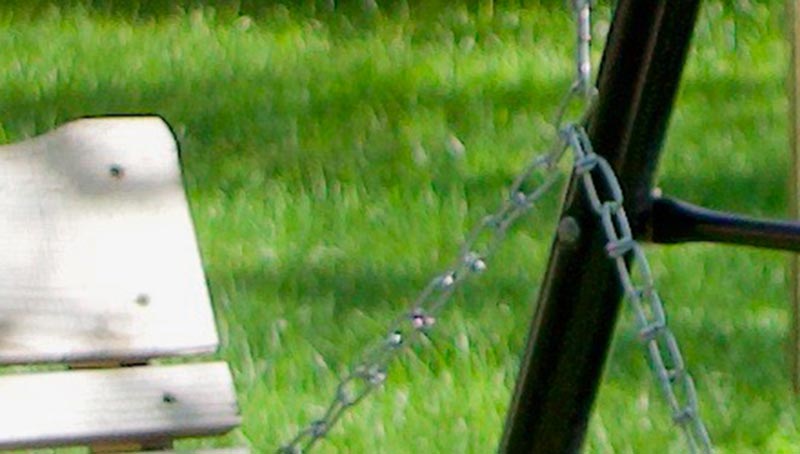
Not horrible, but you can really see the performance compromise Sony had to make for this lens when you drop down to f/8:
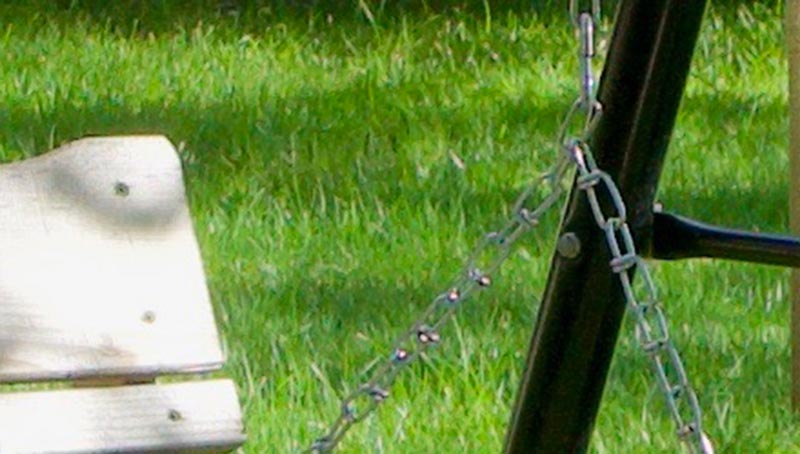
Everything's sharper, and not just from the smaller aperture. Coma is better controlled, and the general 'haziness' across the frame (and especially bad out from the center) goes away—but only beyond f/4. And I really don't want an f/4 or f/8 lens, I want f/2.8 so I can pocket the camera and get a decent shot in any condition!
To give a more extreme point of comparison, here's the same FOV and 100% crop from my D750 and the Nikon 24-70mm f/2.8G lens:
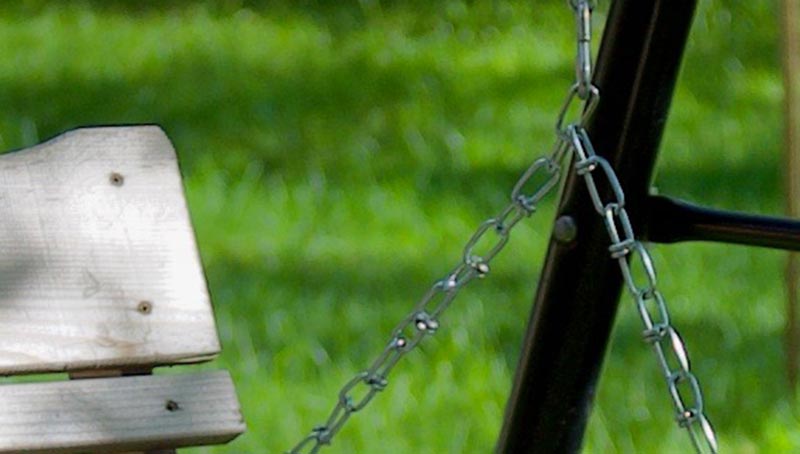
Obviously, it's an entirely different optical system... and the setup weighs a couple pounds more... but if you're used to the latter image clarity (even when wide open at f/2.8!), and you're willing to compromise a bit, down to the level that, say, the Sigma 30mm f/2.8 Art provides, the 20mm at f/2.8 is a step too far. In similar conditions, I can get as good a shot from my iPhone's camera, albeit upscaled slightly. I don't want to lug around a one pound dedicated camera just to get images marginally better than the itsy-bitsy camera on my smartphone!
It is a decent lens. I would say as decent as the kit lens, without the ability to zoom and without OSS. For closer subjects, the bokeh is a little nicer than the kit lens, and if you stop it down a little, it passes up the quality of the kit lens at 20mm. I'm not disappointed with the quality, in fact I got a number of keepers from a walk around the St. Louis Zoo:
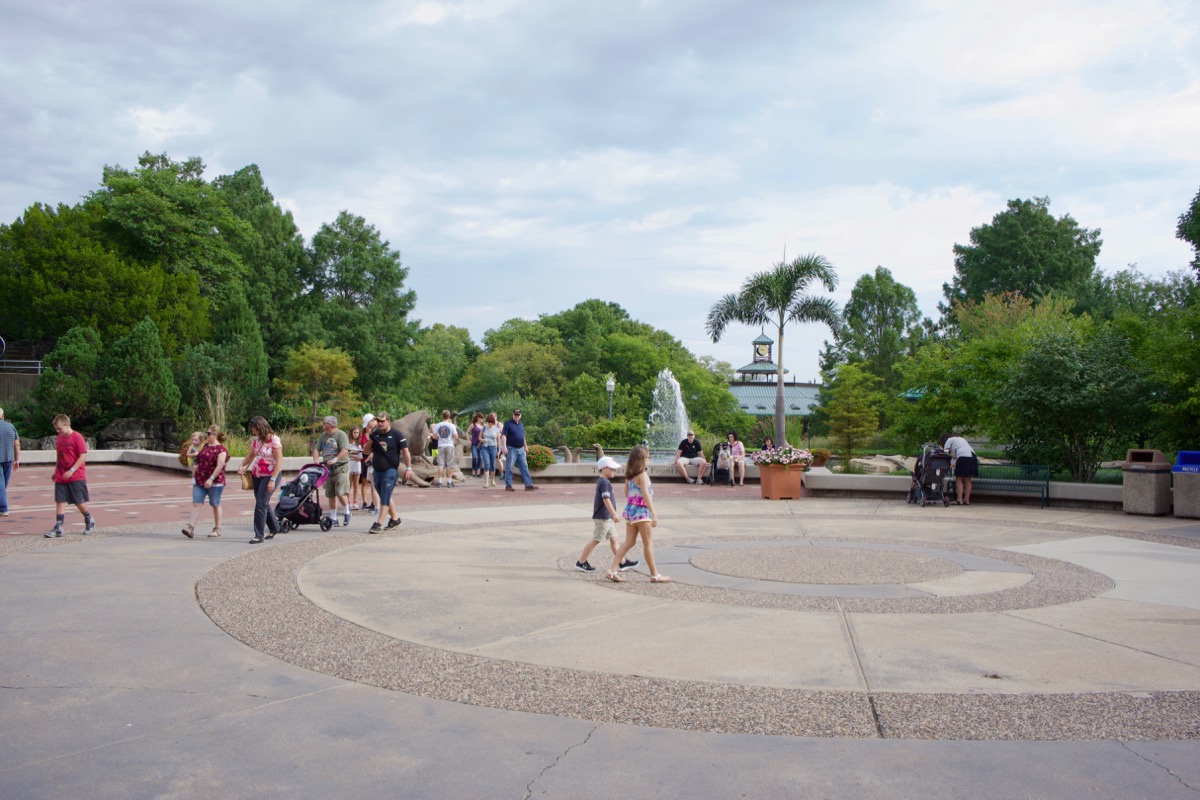
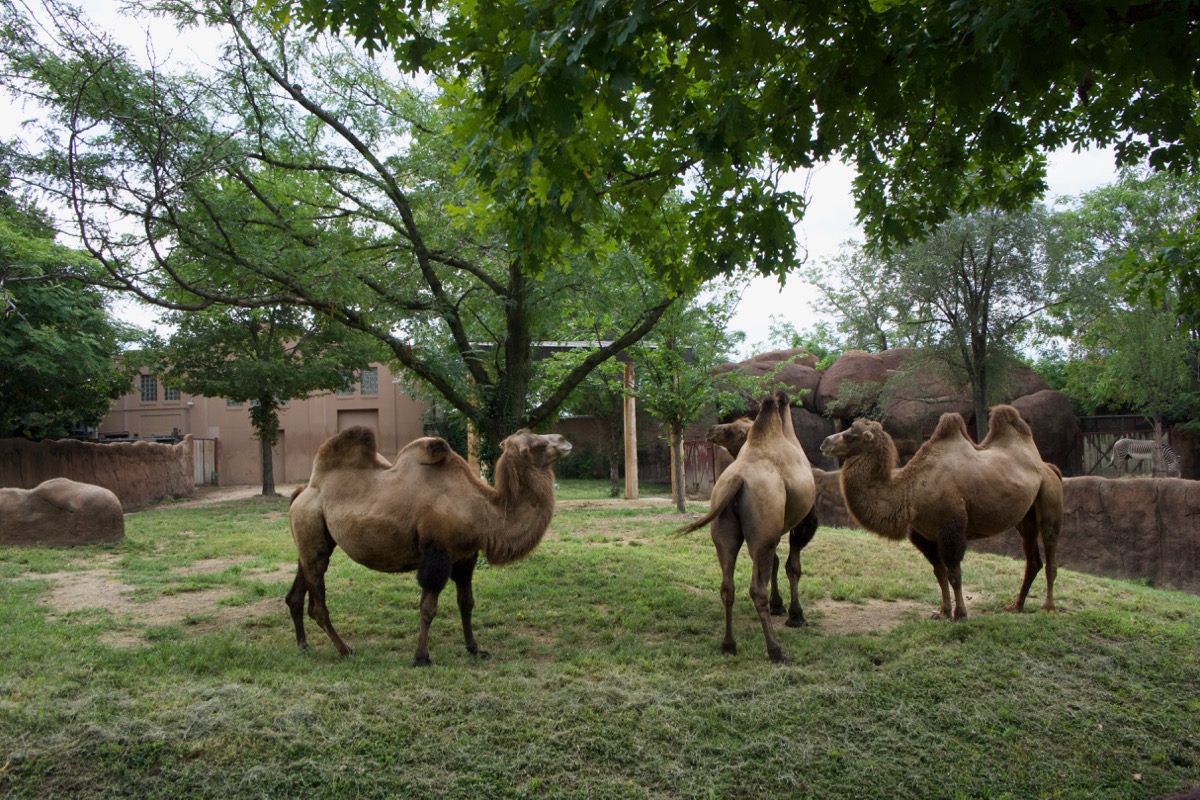
It's just that the quality isn't that much better than what I get with my iPhone, which I always have on me, and which fits even better into my pocket.
Therefore, I've decided to skip buying a copy of the 20mm f/2.8, and am (at least for now) sticking with my less-compact-but-noticeably-sharper Sigma 30mm f/2.8 Art. I switch to the kit lens when I do short video clips, but the Art is almost a permanent fixture due to it's compact size and solid performance on the a6000.
Summary
I didn't spend much time on focus performance, but that's because focus acquisition seemed similar to the 16-50mm kit lens and isn't really spectacular, but it's not horrible either.
Overall, it's like the kit lens, cut in half, and fixed at 20mm. If you want to get a feel for the 20mm lens, just pop the kit lens on, zoom in a tiny bit, and leave the zoom at that setting.
Buy the Sony 20mm f/2.8 E-mount lens on Amazon for $299.
Comments
Thanks for the review. How do you feel about the Sony 16-50mm f/3.5-5.6 OSS? By any chance do you have a review for that? I'm also looking into a compact setup and it seems like the 16-50mm zoom is compact enough for traveling. However, if it's not much better than the iphone then I'd probably pass as well.
I haven't done a full review of the kit lens; right now the only reason I keep it around is for times when I need a zoom for quick HD videos; the power zoom feature is pretty good for that purpose, and compared to any 'handicam'-style camera (or phone), the a6000 + 16-50mm blows them away for video.
For photos, it's a little bit of a mixed bag. The lens is slow (f/3.5 only at the widest zoom), so it's not great for indoors/evening/low light, and the distortion isn't great. But it is definitely an improvement (across pretty much the whole range) over the 20mm—just without the wider aperture, which can be very handy.
So for travel, outdoors, that sort of thing, the kit lens is adequate. I just rented an 18-105mm f/4 for a family trip, though, and that lens absolutely trounces the 16-50, especially in the 50-105mm zoom range! Of course, it has a price tag to match, and it's like 4x longer in use (though I really like that all focus and zoom is internal!).
I hear the 16-50mm has a lot distortion on the edges when shooting at wide angles. Especially at 16mm.
Did the weight or size bother you on the family trip when shooting with the 18-105mm?
Not really; I’m used to carrying my Nikon D750 and a prime lens, which is still heavier than the a6000 and 18-105!
What is the difference between taking video and photo, that makes 16-50 great for one and bad for a other in indoors/low light conditions?
For photo, the full 24 megapixel resolution really highlights any noise due to higher ISO (because of a smaller aperture), and also highlights any slight camera movement which the OSS system can't compensate for.
For video, most of the time you can deal with 1/60s exposure (or 1/30 if not doing 60 fps) and boost the ISO to 1600 or 3200 without the video being noticeably noisy. For photos, past 800, the noise starts becoming apparent if you need to crop.
But like I said, the main reason I keep the kit lens is for the zoom range, power zoom, and general "not worrying if I drop the cheap lens" aspects. I haven't used that lens for any photos for a while, but I switch between a prime and that lens for video depending on the environment.
Hi - I didn't read the whole of your review but it was apparent that like the majority of amateur photographers you are looking at the performance of this lens at maximum aperture. Nothing really performs well here and is generally a marketing device. Having shot stills, films (movies) and TV for 30 years I'd be fairly sure this lens is good at 5.6/8 and the "kit zoom" is uniformly rubbish. That said I did a proper test on Canon EF and the 24-105 was 'sharper 'at 50mm than the Canon primes and offered better resolution than the Medium Format systems we were considering.
The resolution, however you define it, isn't really important in this kind of system - it is the field of view and getting in the right position.
When someone markets a lens as f/2.8, they're indicating the lens could be used at that aperture, not that "it opens up that wide but its performance is terrible, it's actually an f/8").
I haven't shot for 30 years, but I have shot many paid gigs over the years, both still and video, and I have used body/lens combos in the tens of thousands, across many different mediums and formats... and one of the aspects that makes a huge amount of difference to me with modern 24 megapixel (or higher) camera bodies is sharpness/resolution, especially wide open. If I don't have sharpness, I can't crop, and especially with a prime, that really limits what I can do photographically.
And if I can't shoot wide open, then I can't have the freedom of control using the exposure triangle—I'm limited to a certain depth of field, which limits my ability to control shutter speed and ISO, which limits my ability to take sharp, clear pictures in many situations. Just to name a few: indoors/lower light, evening/night, action/sports...
The kit zoom is not a great lens by any stretch of the imagination. And in my review I state as much. And this lens is maaaaaybe close to as good as it by f/4, surpassing it slightly around f/8. But it's not good enough (especially at any aperture below f/8) to warrant a recommendation from me—for my style of shooting—unless extreme compactness with an a-series body is the only goal.
Interesting point of view, came across this while writing my own review of my e mount travel kit. Personally I think the 20mm makes a lot more sense on a smaller Nex 5R. At which point it is not much heavier than a phone and you have a far larger sensor (9x the area of the latest iphone). I don't think your swing image is in perfect focus at f2.8.
It is, there's just an annoying 'haloing' effect produced by this lens with reflective surfaces. I also shot at f/2.8 vs. f/8 on further subjects at the zoo and noticed the same thing. Anything reflective would have a bit of a fuzzy/halo look to it. This lens just isn't very sharp at 2.8.
I have that lens since the Nex5 was a novelty...
And I have the Sony 20mm F1.8G.
I still found it worthwhile to keep the pancake. For one thing, I paid very little on eBay.
For another, it allows me to have my A7C in my pocket with a lens the size of a lens cap.
This 20mm pancake has always rated much better than the equally small 16mm pancake, and I have a suspicion, that this rental lens might have not been up to snuff. I remember getting sharper pictures with mine. On the shots here, the grass and the chain from the swing do look pretty terrible...